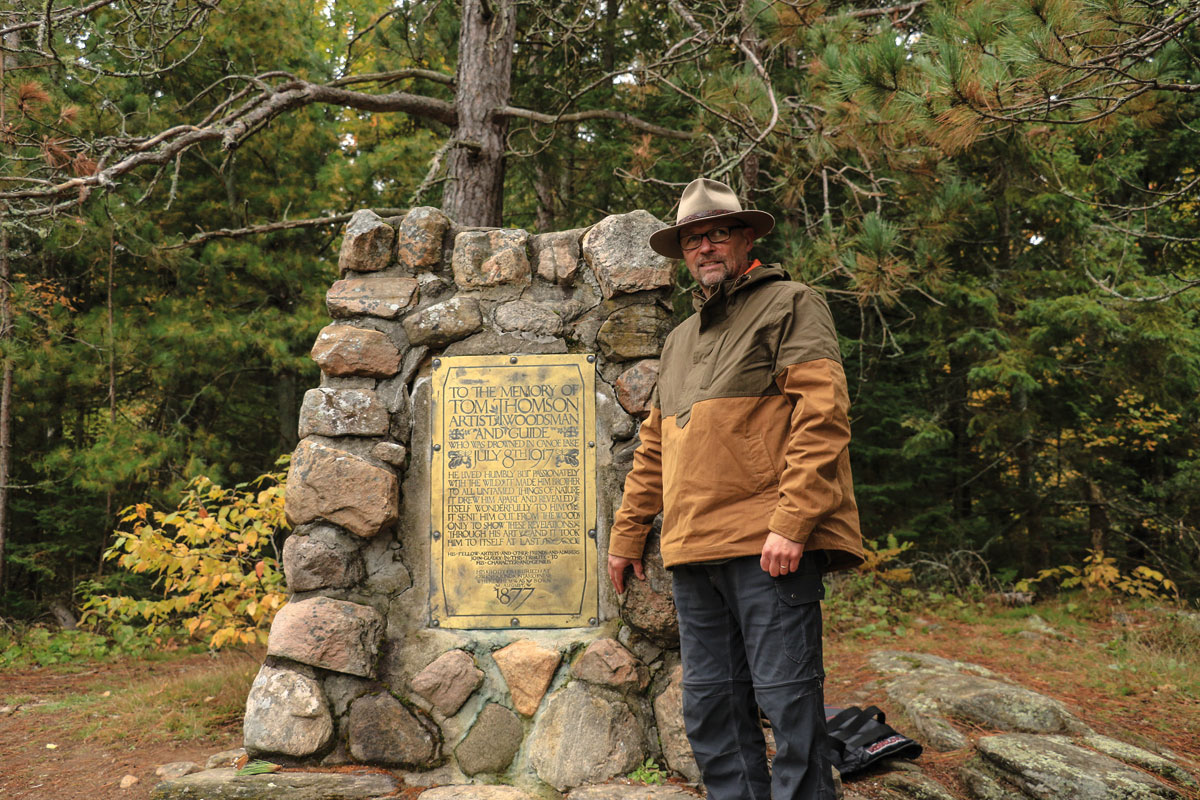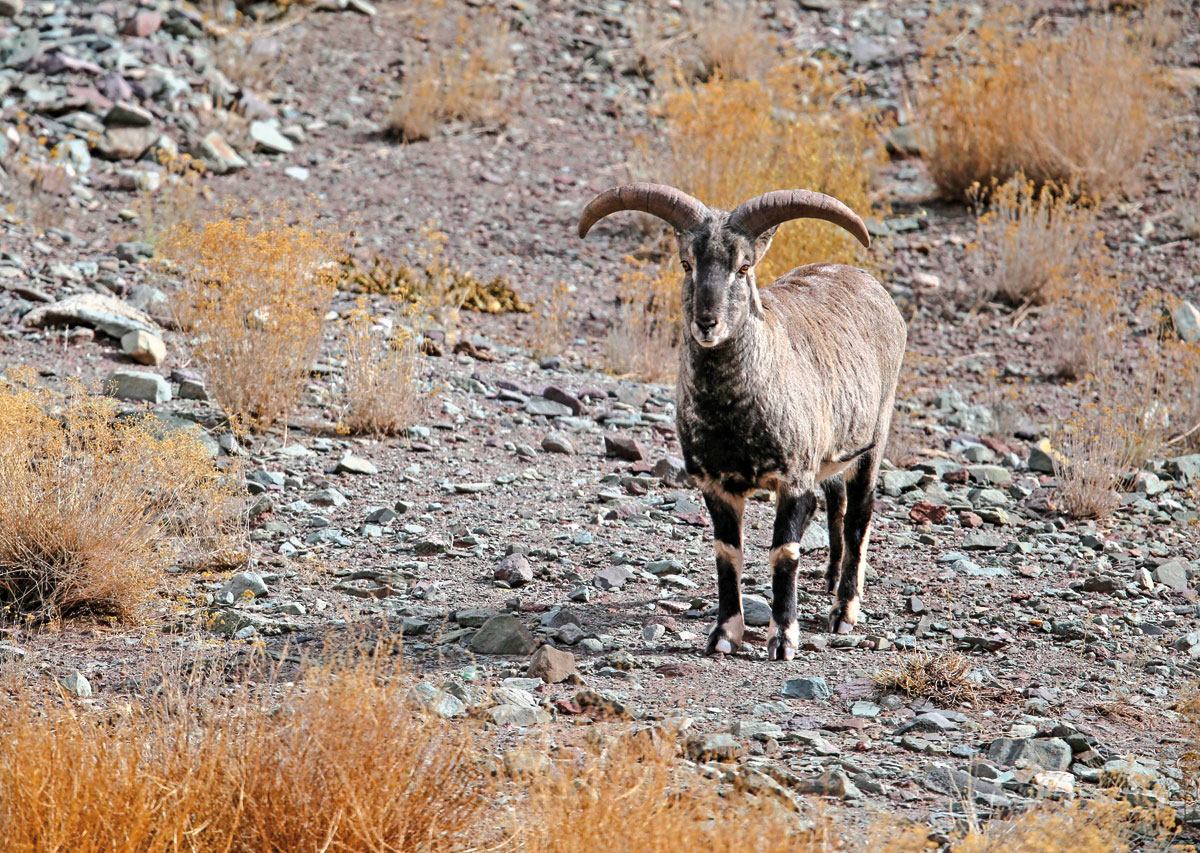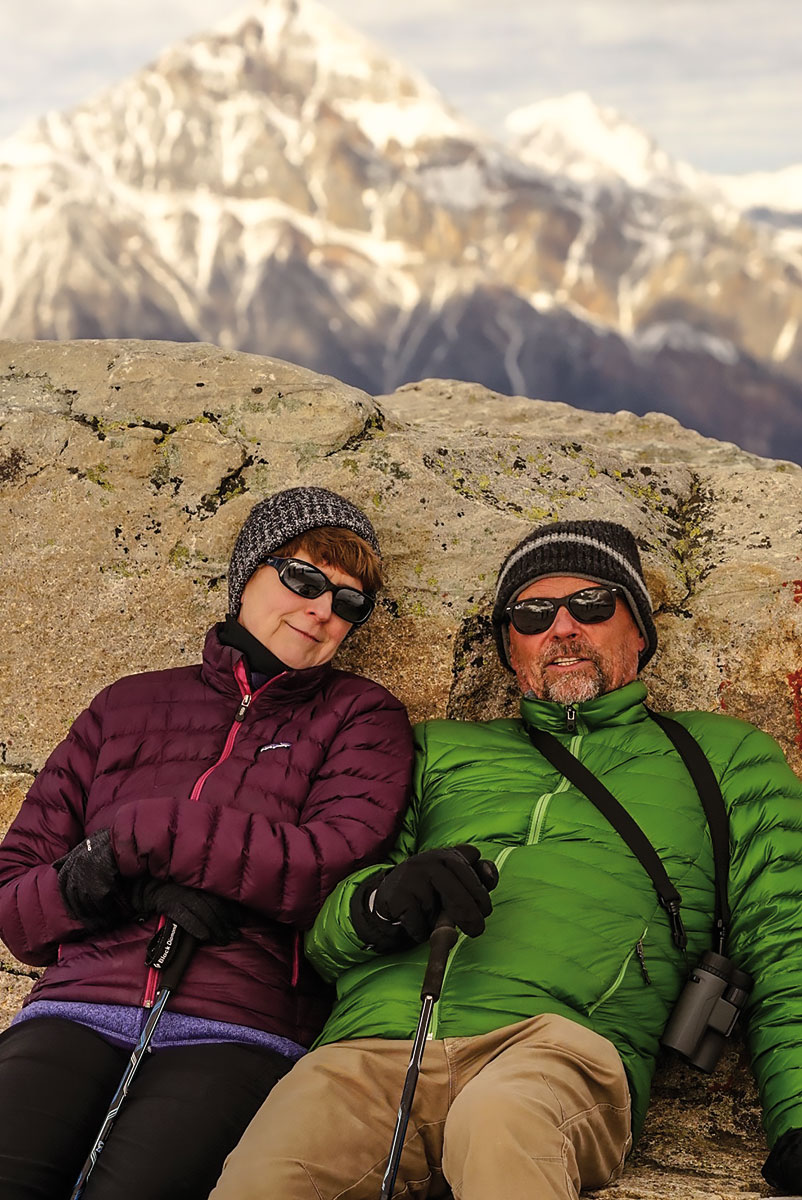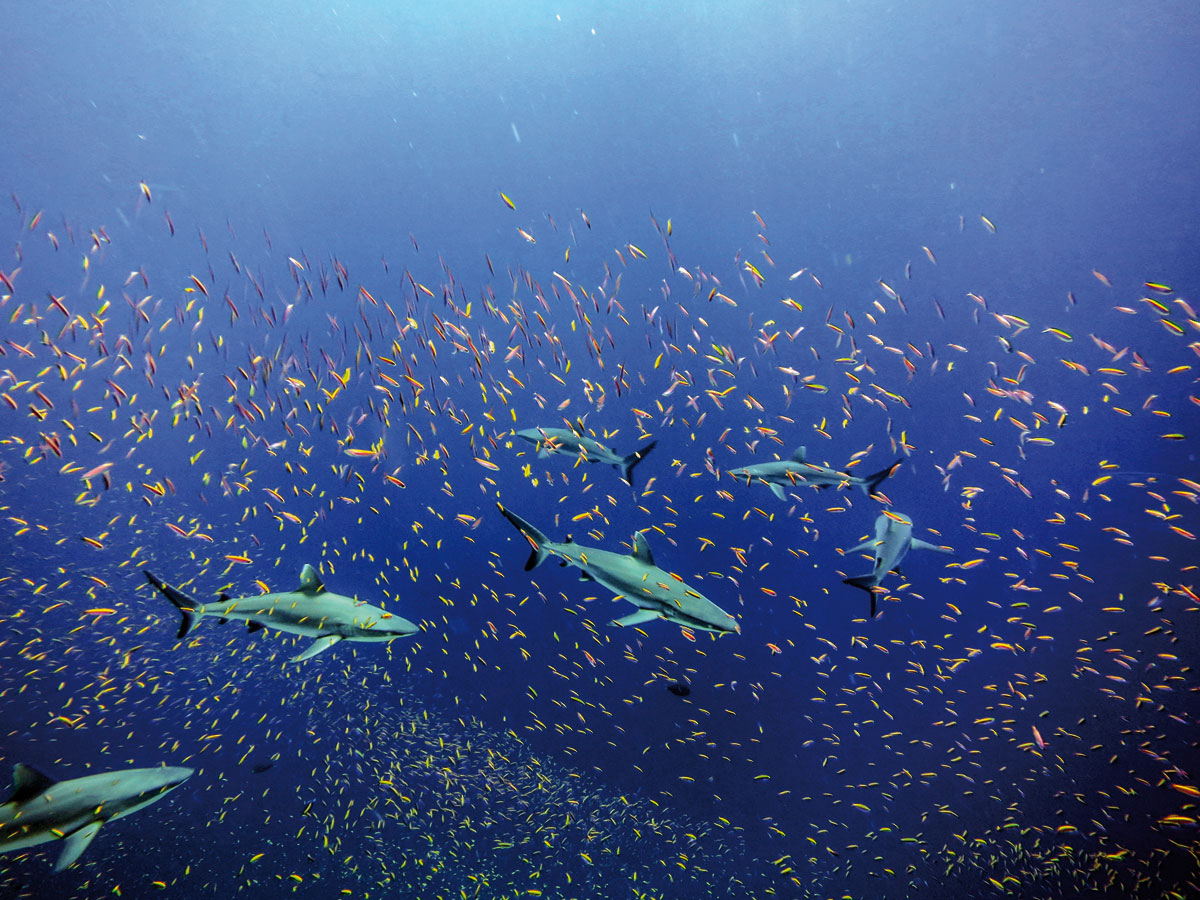Meet Oswald J. Schmitz
First published in Sanctuary Asia,
Vol. 43
No. 10,
October 2023
Oastler Professor of Population and Community Ecology, in the Yale University School of the Environment, Oswald J. Schmitz focuses on the linkage between two important components of natural systems: biodiversity and climate. He believes that human stewardship of the planet is about working to preserve species, natural resources and ecosystem services and being mindful of how human activities could influence ecological interdependencies. In this special Rewilding issue of Sanctuary, he speaks with Lakshmy Raman, Sanctuary Asia, on why ‘trophic rewilding’ alias ‘Animating the Carbon Cycle’ can address both biodiversity degradation and climate change.
Your expertise ranges from climate science and ecology to ecosystem conservation and the impact of animals on carbon sequestration. What triggered your interests in these areas?
I had always been interested in understanding the holism of nature and the relationship between wildlife species and their functioning in ecosystems, and have always had an innate interest in nature and ecology. Growing up, I spent many hours playing in fields and forests and learning the natural history of these places through passive observation – metaphorically osmotic information uptake! But as an undergraduate I had several professors who had a wonderful, formative influence on me to develop a formal scientific approach towards understanding ecological relationships.

Oswald J. Schmitz at Algonquin Provincial Park, Ontario, standing by the memorial dedicated to Canadian painter Tom Thomson. Like Thomson, Oswald spent many hours in forests and fields, learning the natural history of these places through passive observation. These early years amidst nature paved the way to formal training on the science of ecological relationships. Photo Courtesy: Oswald J. Schmitz.
The year 2023 recorded some of the highest summer temperatures worldwide, yet the naysayers continue to deny the reality of the climate crisis...
As a scientist, the shattering of temperature records is entirely unsurprising. We already knew this would happen based on climate science done back in the 1990s. The naysayers will always be naysayers; that’s human nature. No amount of evidence will change their mind. I don’t think anything but extreme suffering will perhaps change their mind. But if they face extreme suffering, then things will likely be too late for all of us. So, as a scientist, I focus on the majority of the people who do worry and care about fixing the climate problem. We owe it to them to help find solutions.
For years, carbon capture and storage in plants and soil has been highlighted as the main climate solution. Can habitat and landscape protection actually prevent climate warming beyond 1.50C?
Actually, the idea to use the carbon capture and storage capacity of nature’s processes as a climate solution is a pretty new idea. The emphasis has typically been on finding green technological solutions that can wean us off fossil fuels and associated carbon emissions, and technologically capture those emissions at source. However, we have come to the realisation that even if we stopped emitting completely (called net zero emissions), we still need to remove all the CO2 in the atmosphere that has built up since the beginning of the Industrial Revolution. If we don’t remove that, we will still see a rise of 1.50C-20C. So, there is still a need to remove and store a massive amount of CO2 on the planet. The best place for that is in soils and sediments of the land and ocean. However, we need plants (habitats) to capture that CO2 before it can enter storage. It will be necessary to steward habitats and landscapes and seascapes in order to drive the carbon into ecosystems. Animating the carbon cycle recognises that animals can be important players in ecosystems, controlling the ability of plants to capture carbon and soils and sediments of ecosystems to store it. The message of ‘Animating the Carbon Cycle’ (ACC) is that animal species (especially large mammals) need to be factored into the accounting of how much carbon will be stored in ecosystems. Large animals are also among the most vulnerable to extinction. So, by protecting and restoring animal species and their habitats, we have a win-win for addressing the climate and biodiversity crisis together.
What is your take on using technology for carbon capture and storage?
The climate problem will require multiple solutions, so I am in favour of developing all kinds of solutions. These could be nature-based or technology-based. The advantage of nature-based solutions is that they involve a proven ‘technology’. Many technology-based solutions require extensive testing before we can be confident of their utility.
How do wild species impact the carbon cycle in terrestrial, freshwater and marine ecosystems?
Animals have an impact through a variety of ways, such as foraging, redistributing seeds and nutrients over landscapes and seascapes, and trampling and compacting soil sediments to enhance and stabilise carbon storage. Animal grazing and trampling can also reduce the chances of massive, CO2-releasing, wildfires, protect against permafrost thawing and the consequent release of methane. Additionally, compacted soils enhance soil and sediment carbon retention through changes in chemical reactions and microbial processes.

A bharal male in Ladakh. In high-altitude grasslands, herbivores such as bharal, ibex, and yak protect carbon stores in soil through trampling and grazing. The message of ‘Animating the Carbon Cycle’ is that animals need to be factored into the accounting of how much carbon will be stored in ecosystems. Photo: Surya Ramachandran/Sanctuary Photolibrary.
Could you elaborate by way of a few examples?
In Indian montane grasslands, wildlife such as bharal, ibex, and yak protect carbon stores in soil through trampling and grazing. This reduces soil microbial biomass and hence soil respiration of CO2 by microbes. As a consequence, the long-term stability of soil carbon storage is increased in their presence rather than their absence.
In boreal forests of the northern hemisphere, trees are important for carbon uptake. But browsers such as moose reduce the amount of tree biomass, which means there will be less carbon captured and stored in living trees. Further, there will be less organic carbon in dead leaves and branches falling to the soil to be stored there. Also, in boreal forests the soil can be quite cool because it is shaded by trees. This means that soil microbes don’t function well, preventing decomposition of leaves and branches, and thus promoting long-term carbon storage in the soil. But large herbivores such as moose thin forests, thus allowing more sunlight to reach the soil surface, warm it and even dry it out. This promotes microbial decomposition and the release of CO2 from the soil. Drying the soil also increases the chance of forest fires. So, when wolves prey on moose and reduce their population, they end up assisting carbon capture and storage.
In tropical forest ecosystems, elephants consume and trample shrubs and small trees that constitute the forest understory, reducing competition with canopy trees that store much more carbon. Forest elephants also eat the fruits of canopy trees and disperse their seeds throughout the forest in their dung.
In the Southern Ocean, large whales including sperm, blue, humpback, and southern right whales feed at ocean depths and return to the surface of the ocean to breathe. Here they release iron- and nutrient-rich faecal plumes in surface waters (a process known as the ‘whale pump’). This fertilisation effect by whales stimulates surface ocean net primary productivity by phytoplankton. Eventually, some fraction of dead phytoplankton would evade microbial decomposition in the water column and sink. This adds to long-term storage in deep ocean sediments. When whales die, their carcasses sink and add to deep ocean sediment carbon storage pools.
So we are undervaluing the role that animals play in controlling the carbon cycle. Do you suggest that if wildlife populations were to be restored to pre-historic levels, our annual carbon emissions could be captured?
The jury is still out on our ability to capture our annual global emissions by restoring wildlife populations alone. It would require significant investment in wildlife, landscape and seascape conservation and restoration. Our best bet must involve reducing carbon emissions by humans and this would necessitate both behavioural and technological changes. But remember, we do not make the argument that ACC is for emissions capture alone – it is primarily to reduce the CO2 build-up in the atmosphere from the day that the Industrial Revolution began. This is really the other side of the climate stabilisation coin.
It has been suggested that it is vital to rebuild overexploited or depleted fisheries and implement large no-take fishing zones in order to mitigate climate change impacts on fisheries. What do you think of the 30x30 CBD target and the aims of the UN Decade of Ecosystem Restoration?
Many fish stocks are not in fact being conserved. They are being exploited in the surface waters of the ocean. But the vast majority of the carbon effect is due to mesopelagic fish – fish that live in the twilight zone below the surface waters of the ocean. They are not yet exploited but are being seriously considered as a new source of fish. Ocean conservation needs to be strengthened to protect the vital role played by marine species.
In the terrestrial realm, rewilding involves the creation of large intact landscapes of connected habitats. This is to ensure that animals can roam widely and maintain their seasonal and annual movement patterns and thereby fulfil their functional roles in ecosystems. So, the idea of a 30 x 30 CBD target is a good one as long as the 30 per cent of land is conserved as connected, not merely isolated patches.

Prof. Oswald with his wife Leslea on a mountain in the largest national park of the Canadian Rockies, Jasper National Park. Photo Courtesy: Oswald J. Schmitz.
So basically rewilding seems to be the two-in-one solution for our biodiversity and climate crises? But, is this a cost-efficient, viable, people-friendly solution?
It can be a cost-efficient strategy because the expensive technological solutions are not yet abundantly proven to work at scale. But we know that nature works – it is what has sustained life on the planet for millennia. We just need to recognise the economic value of that functional role and include that in our accounting of the costs of human transformation of nature through development and resource exploitation.
Rewilding does not mean preserving landscapes by excluding communities. People who live on the land need to be part of the story – they need to participate in decisions about how conservation will take place. This involves seeking ways for wild animals and humans to coexist across landscapes and seascapes, thereby sustaining opportunities for humans to continue to make a living in their traditional domiciles. We need to draw upon and build on the time-tested knowledge of local communities in parity with ecological knowledge. This could effect changes in culture, institutions and governance structures that are needed to ensure the persistence of animal populations and their functional roles, as well as the livelihoods and welfare of local communities. It could also involve engaging members of local communities in the stewardship of their landscapes, thus earning a dignified living from the imperatives of accelerated carbon capture.
Some suggest that such concepts may look good on paper but developing nations do not have the resources to rewild.
Developing nations may not have the financial resources. But they have the critical landscapes and wildlife species needed to develop conservation for the purposes of ACC. Industrialised nations have fewer such landscapes. Clearly the global community requires equitable, just and effective partnerships between those who can support the initiative financially and those who can support it with ecosystems and wildlife. But it requires a recognition of the value of the knowledge base, customs and mores of traditional local communities who live on the land, steward it, and be an integral part of such partnerships.
Will rewilding and animating the carbon cycle in, say, Europe, take funding away from poor and vulnerable nations that are most immediately impacted by climate change?
I think every nation on the planet needs to think about how they can and will contribute toward a flourishing planet by addressing climate change and biodiversity loss. There isn’t a single global home-run solution. The power of ACC is that it has to be place-based. So, locals around the world can think of creative ways to protect their own wildlife and landscapes as part of a global portfolio of solutions. This can change the mindset of people – the climate and biodiversity problem is no longer something that occurs and needs to be fixed in some ‘other’ remote place halfway around the world. It is something we can do in our metaphorical backyards. If everyone does their part, financially poor and vulnerable nations will be helped because the richer nations would take care of the planet in their own geographies.

A school of Bartlett’s anthias Pseudanthias bartlettorum and whitetip reef sharks at Jarvis Island. The creation of large no-take fishing zones will help restore overexploited fisheries, which will ultimately reduce the negative impacts of climate change on marine wildlife. Photo: Public domain/NOAA/NMFS/Pacific Islands Fisheries Science Center Blog.
What three key actions would you wish world leaders to take to staunch the climate and biodiversity meltdowns we are currently witnessing?
1. Stop seeing humans as separate from nature. Humans are part of nature. Nature is our home and we need to stop despoiling it.
2. Stop valuing nature merely as a trove of natural resources to fuel our techno-economic economy. We need to value nature for the technologically-irreplaceable life support functions it provides to human and non-human living beings alike. Our long-term survival and prosperity are dependent on that.
3. Stop looking upon wild animals merely as charismatic, iconic showpieces to revere. Recognise their integral, functional roles in ecosystems.
And if you had a magic wand – the top three things you would want them to implement...
1. Account for the full value of nature (natural resources, ecosystem services and natural standing capital), and fully account for the costs of damaging nature (which is now largely treated as an economic externality) when making decisions about developing landscapes and seascapes.
2. Strive to create and preserve intact large-scale coexistence landscapes that enable humans and non-human species to live to the advantage of both in ways that all can flourish together.
3. Embrace the aphorism of the 1970s environmental movement “Think globally, act locally,” which was coined way back in 1915 by the Scottish planner and conservationist, Patrick Geddes as a golden rule each and every time major environmental policies are crafted and implemented at national or subnational scales.





